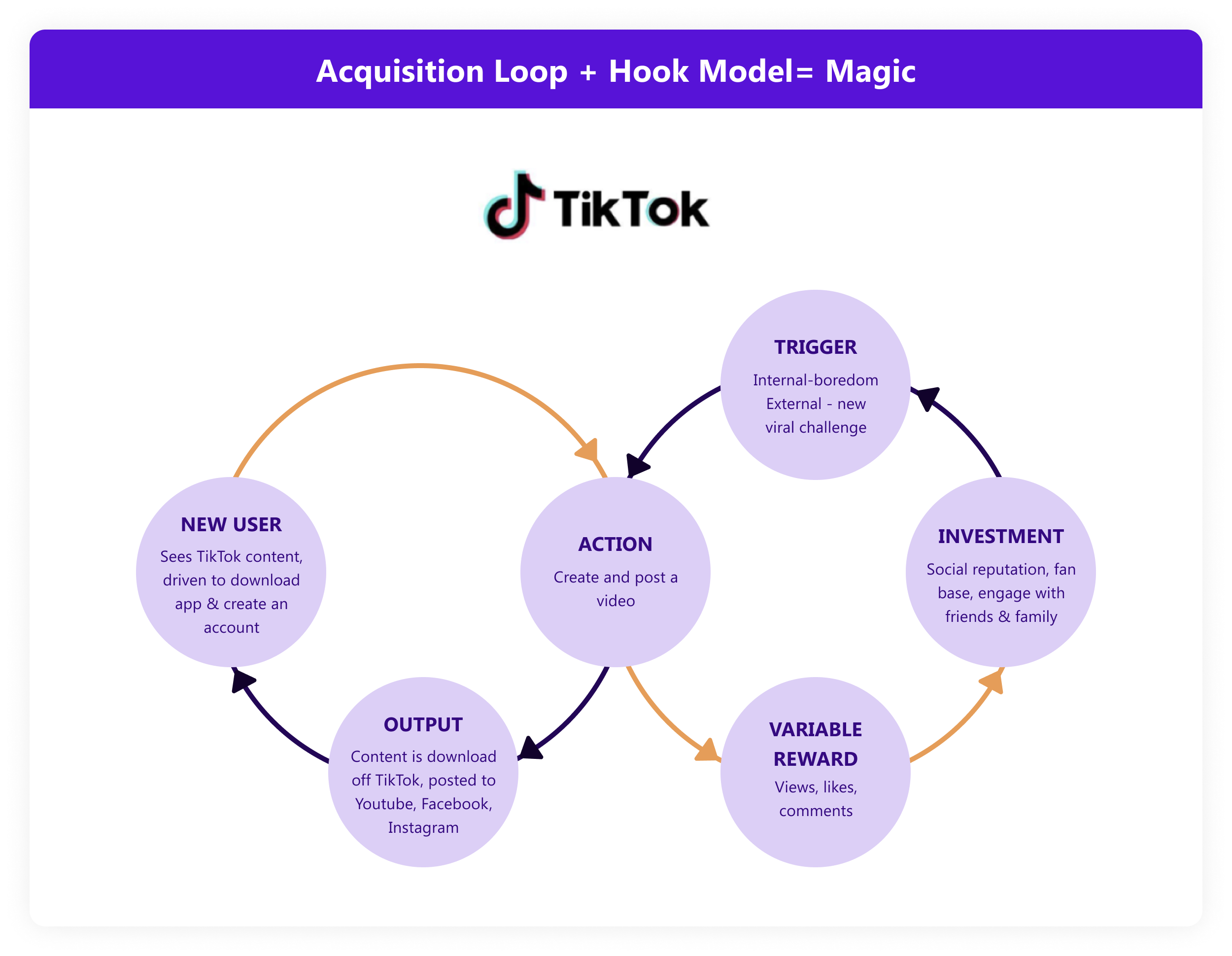¶ Growth Loops
¶ What it is
A Growth Loop is a system that starts with user acquisition and then attracts the users to continuously adopt the scenario by providing value and resolving user problems. The ultimate goal is to have a self-sustaining approach to retain the existing users and encourage them to refer new users. It combines Growth Methods and Retention intricately.
¶ Why it is useful
Growth Loops benefit in strategising how to reinvest the output of one cycle as an input of the following cycle at a low cost.
It also promotes the retention rate because the loops depend on loyal users who share, promote, and interact with your business.
¶ When to use it
Growth Loops are used when designing strategies for a product in marketing and product design.
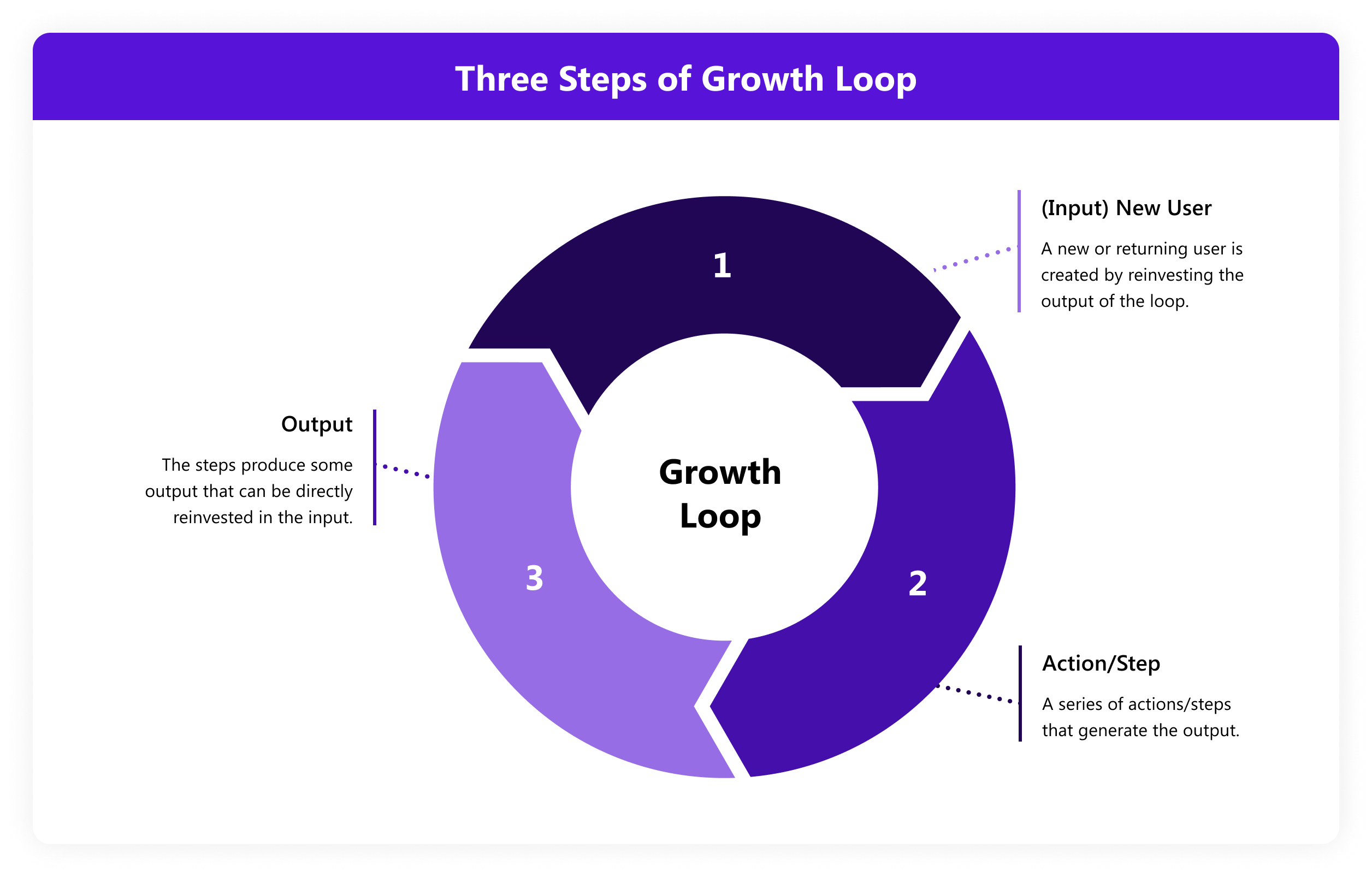
¶ How is it done
- Viral Loop: When a product is very valuable, the users are willing to share it with friends, who will also do so. This works if the acquisition rate of new customers by customers is, on average, higher than 1, then the product can be said to go viral.
- Paid Loop: When new users are acquired via paid ads, the revenue generated can be reinvested into more paid ads.
- UGC / Search Loop: Users generate content, and then the content is indexed on search engines, making more visitors discover the platform through search.
The principle of Growth Loops is to create a connected module that unites the three steps of the Growth Loop seamlessly as a system.
Take the Viral Loop as an example:
Use products -> recommend to friends -> friends use products -> recommend to another friend -> so on and forth
¶ Do's & Don't
Do's
- Understand the primary driver of new customer acquisition based on the type of proposition you provide.
- Model different growth loop models and see which one might perform best. Validate with experiments.
- Try to combine different acquisition/retention models to form unique loops that work well for your product.
Don't
- Don’t try to force a model onto your users. You might desire to have a Viral Loop, but if users don’t feel compelled enough to bring new users, then it will not work.
¶ Example
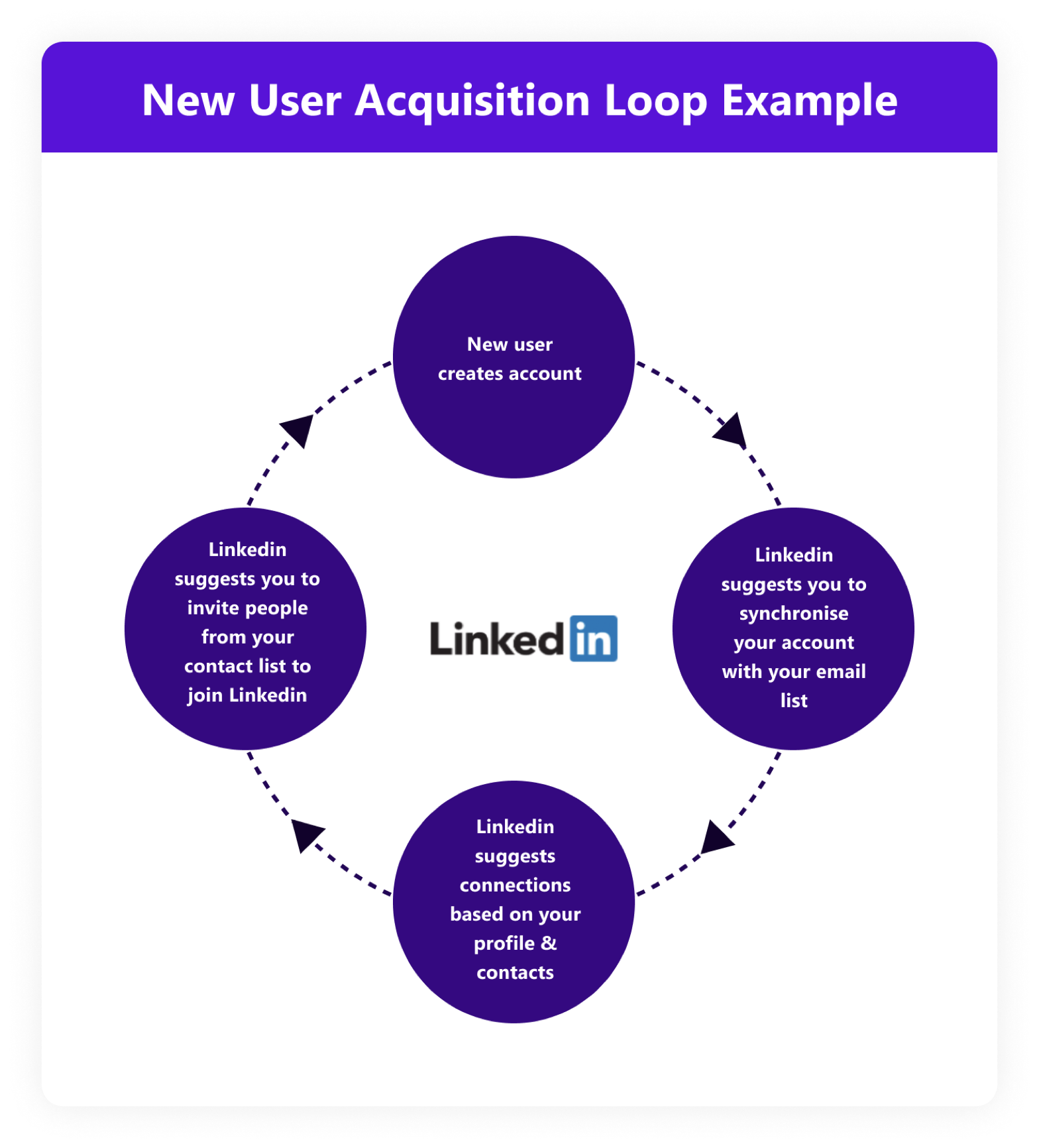
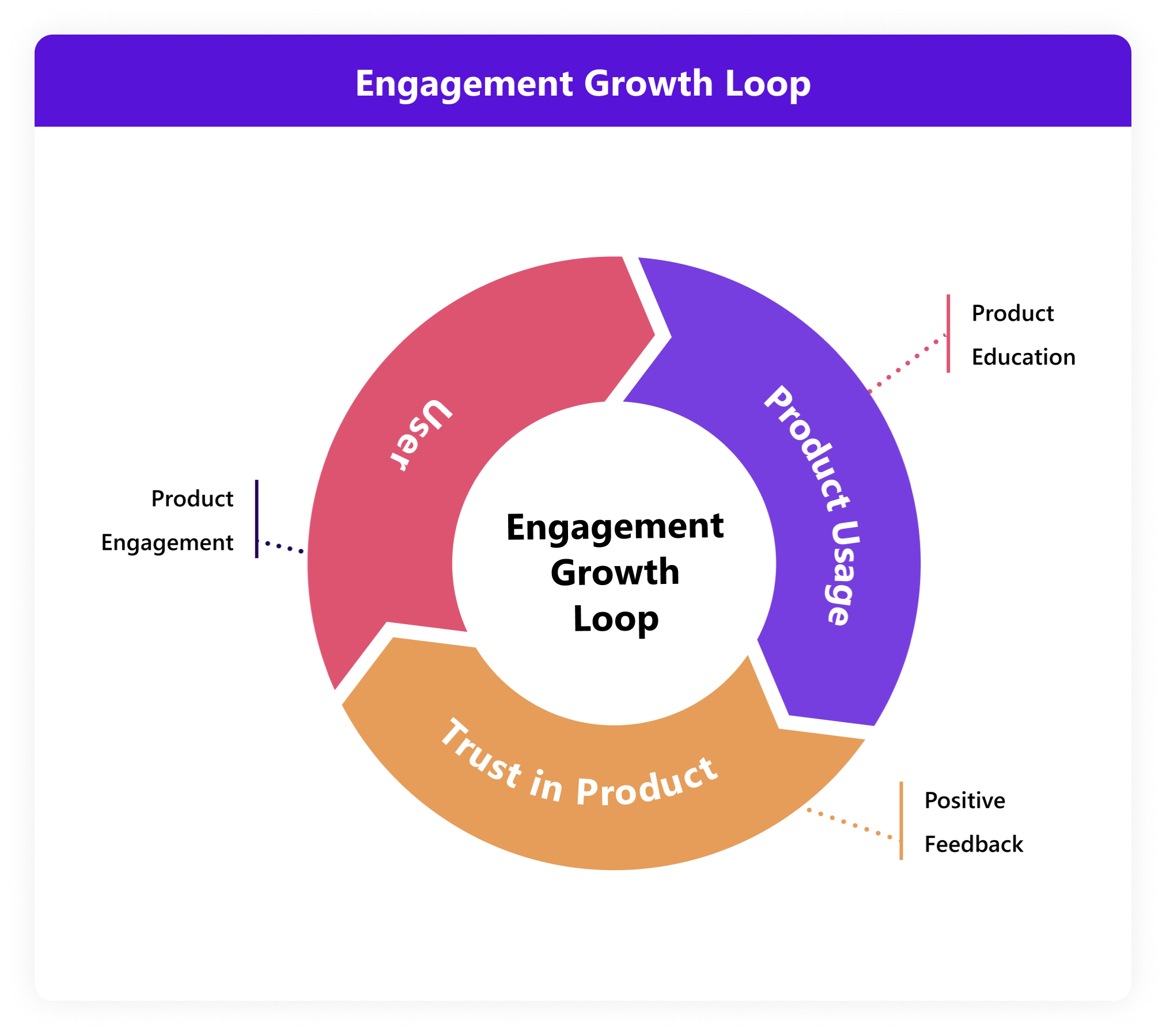
¶ Useful Tips
¶ Different Types of Growth Loops
Here are the most common growth loops:
- Viral Loop: When a product is very valuable, the users are willing to share it with friends, who will also do so. This works if the acquisition rate of new customers by customers is, on average, higher than 1, then the product can be said to go viral.
- Paid Loop: When new users are acquired via paid ads, the revenue generated can be reinvested into more paid ads.
- UGC / Search Loop: Users generate content, and then the content is indexed on search engines, making more visitors discover the platform through search.
The principle of Growth Loops is to create a connected module that unites the three steps of the Growth Loop seamlessly as a system.
Take the Viral Loop as an example:
Use products -> recommend to friends -> friends use products -> recommend to another friend -> so on and forth
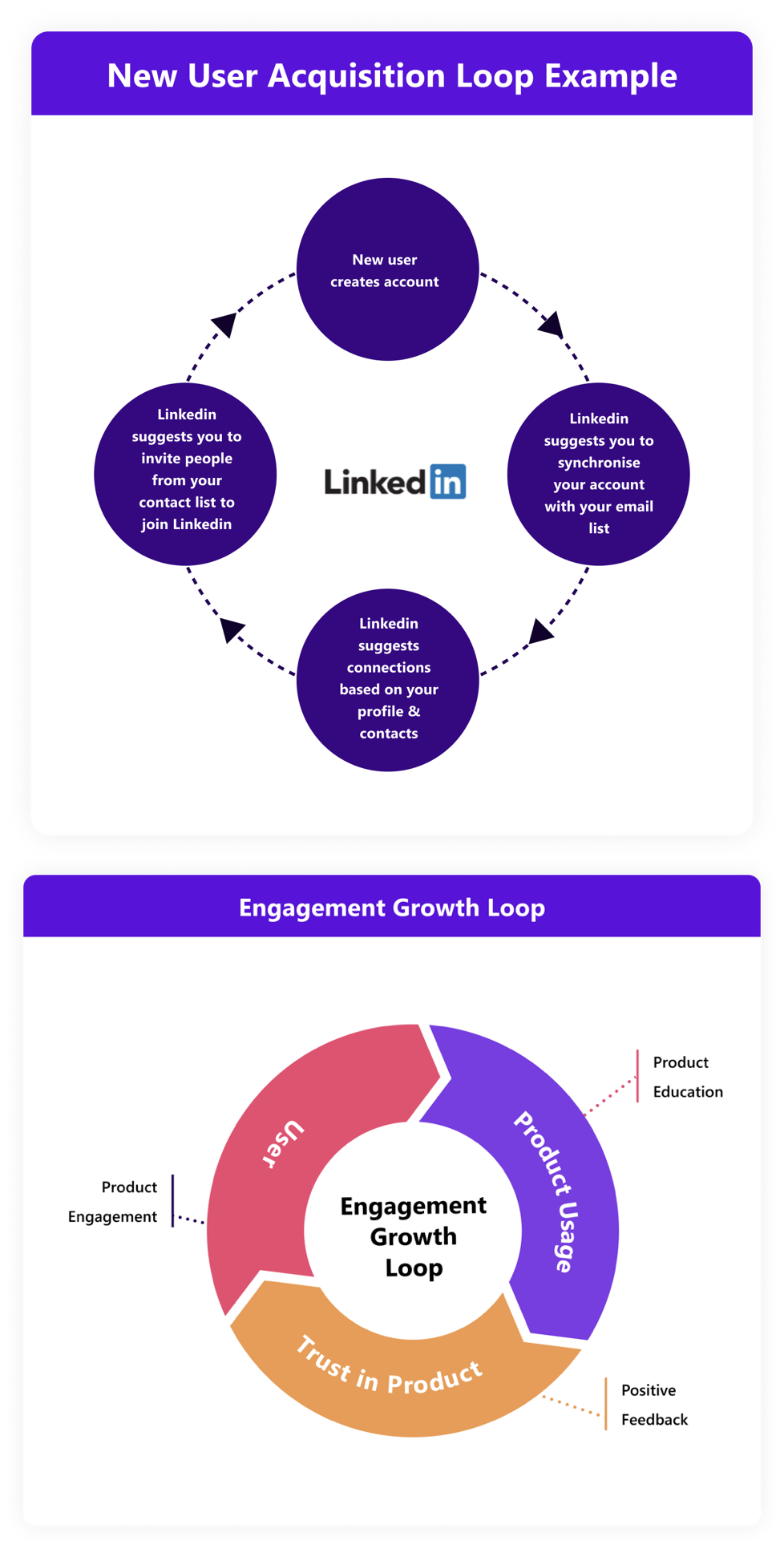
¶ Acquisition Loop + Hook Model = Magic
Depending on different goals, you might choose different types of growth loops:
- Acquisition Growth Loop
An acquisition growth loop is an action to reinforce itself. The move is built within the product and helps gain the desired growth output.
- Engagement Growth Loop
The goal of engagement growth loops is to create a perfect experience that engages the user with the product more to promote user retention and reduce churn rate.
Acquisition Loop & Hook Model
The Acquisition Loop is used to acquire more new users
The Hook Model is used to keep the existing users using the product
After the ‘Action’ step, the Acquisition Loop requires an external action to expose the brand to new users, while the Hook Model requires an internal effort to form a habit.
